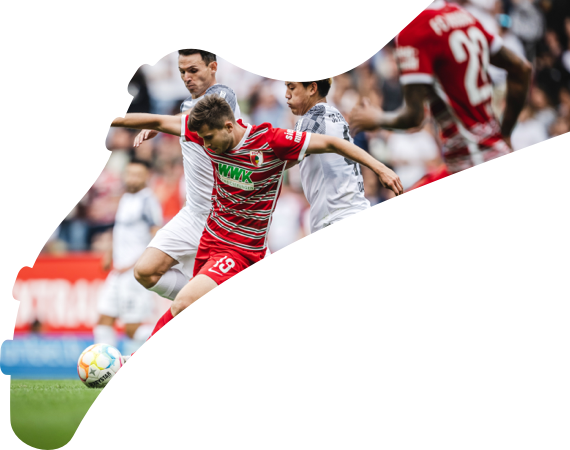
Tactics corner: How Dortmund's three-diamond-three formation overcame Gladbach
Borussia Dortmund hit their straps in the come-from-behind 4-2 win over Borussia Mönchengladbach on Bundesliga Matchday 12. bundesliga.com explains how they did it...
Take charge of your own team in Bundesliga Fantasy Manager!
Gerardo Seoane had experimented with various formations, before coming up trumps with a 5-3-2 variation in Gladbach's 4-0 win over Wolfsburg prior to the November international break. Dortmund expected to face the same kind of set-up in the Battle of Borussias, with Terzić adjusting his team accordingly. Switching from his customary 4-2-3-1 when defending, to two lines of three top and bottom a midfield diamond when in possession ultimately won the day.
Dortmund's system explained
In essence, Dortmund operated with three central defenders in the build-up, with three attacking players pushing the opposition back line high up the pitch, and a robust diamond in the centre of midfield. The width of the attacking wide players coupled with the threat posed by the central striker completely hemmed in Gladbach's back five. The right- and left-sided centre-backs could not break out without leaving massive holes in behind, so the full-backs were also required to defend against BVB's wingers.
Although Gladbach had a numerical advantage defensively, they were left outnumbered elsewhere. In turn, that left space for Dortmund to exploit in the build-up. The three attacking players in the diamond tied down the Gladbach midfield, while the two visiting strikers in the 5-3-2 were left with the thankless task of unpicking a three-man defence shielded by a holding midfielder.
The Terzić tweak
Initially, Dortmund lined up with three players across the middle, with Marco Reus and Jamie Bynoe-Gittens flanking Emre Can. However, the ploy fell short as Bynoe-Gittens had to move inside - something he, unlike Reus, is not accustomed to. Due to Ramy Bensebaini pushing high and Bynoe-Gittens' lack of cover, Gladbach were able to counter all too easily up the right-hand side as they did for the opening goal, as well as another that was ruled out for offside.
Terzić responded in kind, albeit without tearing up his game plan. With Can moving to No.6, Bensebaini dropped into the back three, Marcel Sabitzer became the left-sided No.8 and Bynoe-Gittens the attacking left-sided winger. Positions were by no means fixed, either, with Reus, No.10 Julian Brandt and even Bynoe-Gittens trading places. However, positional responsibilities were unchanged. The left winger was charged with providing width from out wide, the right winger formed part of the midfield diamond.
Smart tactics force goals
The tactical tweaks resulted in a more effective counter-press. The defensive specialists were closer to the ball and able to assert themselves on the game. As a unit, Dortmund were tighter at the back and a strong break paved the way for the equalising goal, which benefitted from the numerous attacking players in central positions. Brandt moved from his No.10 position to the right flank and swung over a cross; centre-forward Niclas Füllkrug and Sabitzer and Reus - No.8s when in possession - were all waiting in the box.
Indeed, this was the first time Dortmund's three-diamond-three formation really game into play and exploited Gladbach's 5-3-2. Centre-back Bensebaini dribbled up the left and could not be picked up by the attacking duo, who were occupied by Can and the other BVB centre-backs. As a result, Gladbach's Rocco Reitz had to move out to Bensebaini, with his opposite number, Sabitzer, free and stealing the attentions of right-sided central defender Joe Scally.
Since Füllkrug had tied up central centre-back Nico Elvedi in the middle, space opened up for Bynoe-Gittens to gain a march on Franck Honorat and attack the defensive hole. Bensebaini found the left winger unmarked, forcing Elvedi to leave Füllkrug in an attempt to stop the young Englishman. Bynoe-Gittens saw him coming and headed the ball to Füllkrug, who fired past Moritz Nicolas with aplomb.
Dortmund used the same tactic before the half-time break, this time on the other wing. Attacking up the right, the ball was worked back to central defender Mats Hummels. Sabitzer had already attacked Scally in the left half space, before retreating and drawing the American out of position. Reus was left all alone to connect with Hummels' eventual cross, but he couldn't supply the finish.
Gladbach outfoxed
Gladbach responded in kind as Honorat and Scally dropped further back in a bid to stop Dortmund's runs from deep, but above all so Scally wouldn't be dragged out of the three-man defence. The avenues that had led to one of Dortmund's two goals - and almost a third - had been closed.
Not that it solved the problem. Instead of finding space in the deep areas, Dortmund's No.8s - now no longer under pressure from Gladbach's out-of-position centre-backs - and the wingers, especially Bynoe-Gittens on the left, were able to play in front of the Gladbach defence time and again.
The first warning shot came in the 42nd minute: Nico Schlotterbeck dribbled to the left as a central centre-back and found the feet of Bynoe-Gittens in front of Honorat. BVB's left winger beat Honorat one-on-one and was able to get into the penalty area, with Gladbach No.6 Julian Weigl close to conceding a penalty for a risky - but successful - challenge.
A similar move produced Dortmund's third goal as they recovered from 2-0 down to lead for the first time. Bynoe-Gittens once again provided the outlet on the left, and while Gladbach won back possession twice, Dortmund were quick to regain the ball. Jordan lost out to Schlotterbeck, Reus took advantage of Manu Koné's mistake, and Bynoe-Gittens ghosted in off the left to pick up possession and score from 18 yards.
Worse still for Gladbach, even when they managed to defend crosses into the box, Dortmund still dominated the centre of the pitch. On one such occasion in the first half, Bensebaini played an aerial pass to Sabitzer; Honorat won it back, but Reus stole it off him in the half-space before playing a one-two with Füllkrug and drawing a smart save from Nicolas.
In the second period, defensive stability took precedence. Instead of the diamond, BVB favoured width at the back, largely in a response to Gladbach's switch to a 4-4-2. However, with a 3-2 lead, the onus was no longer on them to attack. They kept their cool, and eventually added the gloss with a late goal on the counter.
Watch: Dortmund 4-2 Gladbach - highlights

Leverkusen up next
Bayer Leverkusen - who play with a back three - provide the next test of Dortmund's top-four credentials. What can the Black-Yellows learn from the Gladbach win that might prove useful against the unbeaten Bundesliga leaders?
Starting with the basics, a three-man defence with wing-backs that like to push high is risky business. Leverkusen's right side in particular - with Jeremie Frimpong and Jonas Hofmann doing the bidding - could cause Dortmund real problems or be found wanting defensively, depending on how Terzić sets his team up. Bensebaini should offer a useful counterbalance, though not all three-/ five-man defences are the same.
Leverkusen, for example, line up in a 3-4-3 that switches to a 5-2-3 when not in possession. The attacking change means three strikers would go toe-to-toe with three centre-backs. The idea of having a free defender, who plays long balls into open spaces, would not work. On the other hand, a two-man central midfield area is a potential weak spot to exploit.
Watch: What makes Xabi Alonso's Leverkusen so good?

It Terzić's case, it could be a smart move to sacrifice a player from the central diamond in favour of a four-man defence. That way, the bulk of the defence and midfield stays unchanged. The BVB tactician could achieve this by either dropping a player back in the build-up, or simply using his right-back in a flat back four. The nominal right-back would then have to act as the wide man instead of shifting into the middle.
However, Alonso has the nous and the tools to adapt. In Frimpong, Leverkusen have, like Gladbach, a very attack-minded right wing-back. Bynoe-Gittens will find space in behind, so it will be interesting to see how Terzić responds to any tactical shifts on Alonso's part to negate the threat of being caught out. On paper, at least, Leverkusen have the surprise element on their side.
Related news

High drama in Bundesliga 2
Bundesliga 2 is up to its old tricks again, with just nine points separating the leaders and teams as low as 12th at the halfway stage...

Clubs' winter break plans
The Bundesliga returns on Friday, with several teams having played friendly matches to get back up to speed. Find out how they got on...

Who is Issa Kaboré?
All you need to know on the Burkina Faso international right-back, who has joined Bremen on loan from Man City...


